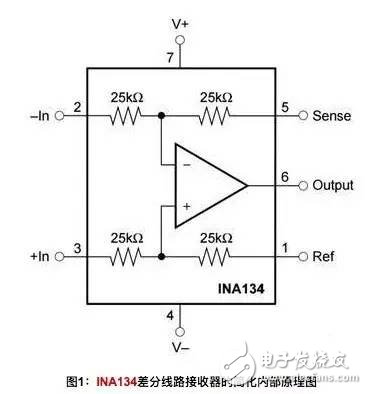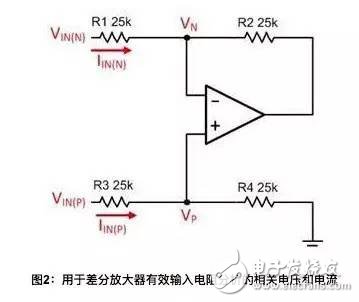Why is there always a problem with the circuit? Let's take a look at the details! A monolithic differential amplifier is an integrated circuit that contains an operational amplifier (op amp) and no less than four precision resistors in the same package. They are very useful building blocks for analog designers who need to convert differential signals into single-ended signals while rejecting common-mode signals. For example, the INA 134 shown in Figure 1 is intended to be used as a line receiver for a differential audio interface. While most designers feel that this simple building block is easy to use, I have found that one aspect of using them is often overlooked: the two inputs of the differential amplifier have different effective input resistances. The "effective input resistance" that the author refers to refers to the input resistance generated by the internal resistor value and the operation of the op amp. Figure 2 shows a typical configuration of the INA134 with labeled input voltage and current and voltage at the internal op amp input node. For each input, Equation 1 interprets the effective input resistance as: Let's start with the easier part: the in-phase input. Looking at the diagram in Figure 2, you will find that R3 and R4 are connected in series. Assuming no current enters or leaves the op amp input, Equation 2 calculates the effective input resistance as: Now let's focus on the inverting input. Recall the ideal op amp rule: the two inputs of the op amp should always be at the same potential (Equation 3): You can also see that R3 and R4 form a voltage divider at the non-inverting input. Equation 4 calculates the op amp non-inverting input (VP) voltage as: Why is this important? Oh, because this voltage can partially determine the effective input resistance of the inverting input. Consider that the current through R1 (IIN(N)) is equal to the voltage across R1 divided by its resistance (Equation 5): Returning to Equation 1 and replacing the input current with Equation 5, you can get Equation 6 - a general equation that calculates the inverting input resistance: Returning to Equation 1 and replacing the input current with Equation 5, you can get Equation 6 - a general equation that calculates the inverting input resistance: Note that the effective input resistance of the inverting input actually depends on the ratio of the voltage at the two inputs. To understand how this can affect your application, consider an example: the INA134 used in an audio line receiver application where the voltages at the two inputs are equal in magnitude but opposite in polarity (Equation 8): Looking back at Equation 2, the effective input resistance at the noninverting input is fairly simple. However, the inverse relationship of the two input voltages can have a significant effect on the effective input resistance of the inverting input (Equation 9): The effective input resistance of the inverting input is one-third of the effective input resistance of the non-inverting input. Therefore, when choosing an input coupling capacitor and filter circuit, you must consider the impedance of the inverting input to be low. In addition, any amplifier that drives the input of the differential amplifier must be able to drive the lower impedance of the inverting input. Using a simple circuit, often the most basic aspect of its operation can cause trouble in the lab. So don't ignore the obvious things! Graphic I network Security Aluminum Alloy Die Casting Security Aluminum Alloy Die Casting,Aluminium Alloys Die Casting,Aluminum Alloy Die Casting Mold,Aluminum Housing Aluminum Alloy Dies Dongguan Metalwork Technology Co., LTD. , https://www.diecast-pro.com












November 13, 2022